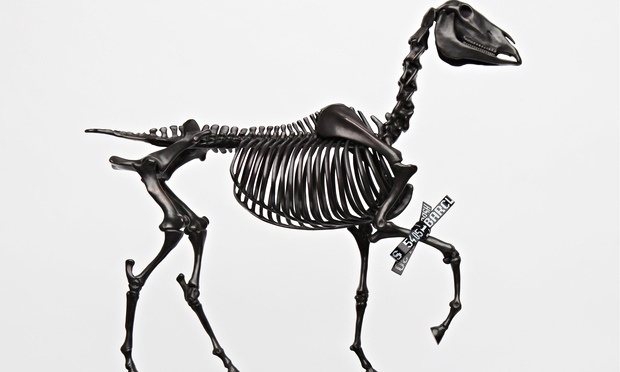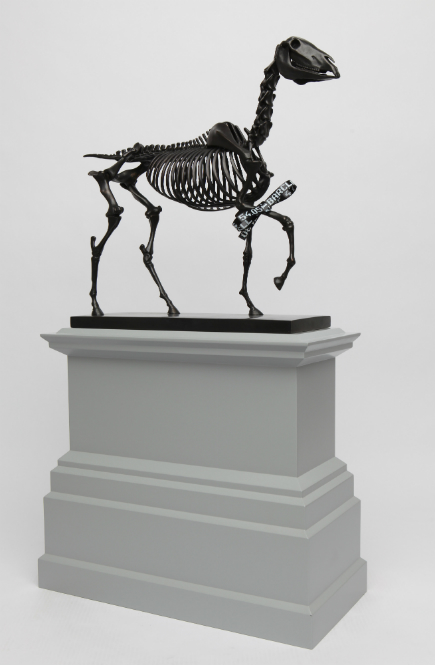
The critical bite of Hans Haacke’s Gift Horse
Why has the controversial artist put a stock exchange ticker on a horse's leg in London?
An equine artwork might seem highly conservative, yet you won’t have to look Hans Haacke’s Gift Horse sculpture in the mouth to realise that this beast isn’t quite so tame. This bronze skeleton, which will be on display on Trafalgar Square’s Fourth Plinth 5 March until the autumn of 2016, is based on etchings by George Stubbs, the eighteenth-century British artist, and makes reference to his 1766 publication, Anatomy of the Horse.
However, an electronic stock-exchange read-out is also cast onto the skeleton’s foreleg, as if tied in a bow. Once unveiled, this will display live ticker-style information from the London Stock Exchange – an allusion to another great British pioneer, Adam Smith, whose seminal economics text, The Wealth of Nations, was also published in 1766.
During the weekend of the unveiling, Haacke will appear at a symposium dedicated to his work, to be held on 7 March at London’s ICA. Yet, by way of explanation, the artist has already said, “What happens if the invisible hand of the market ties the knot for us?”

This explicit link between cultural, social and economic power is typical of Haacke. As we explain in our monograph, the artist “is particularly admired for his research into the art world's hidden economies and politics, as well as into the repressed histories of places and people.”
In the past, his work has taken on New York’s slum landlords, German industrial pollution, the Mobil oil company, Margaret Thatcher, Charles Saatchi and Ronald Regan. Indeed, in 1971, the Guggenheim Museum cancelled a Haacke solo exhibition that planned to examine the financial arrangements of the museum’s trustees.
While Gift Horse is not quite so critical, its hallowed positioning, the live financial link and clear references to venerable, establishment art works, might perhaps make the square’s visitors question how other more permanent works, found their place in British culture. For more on this provocative artist buy a copy of our Hans Haacke monograph, here.